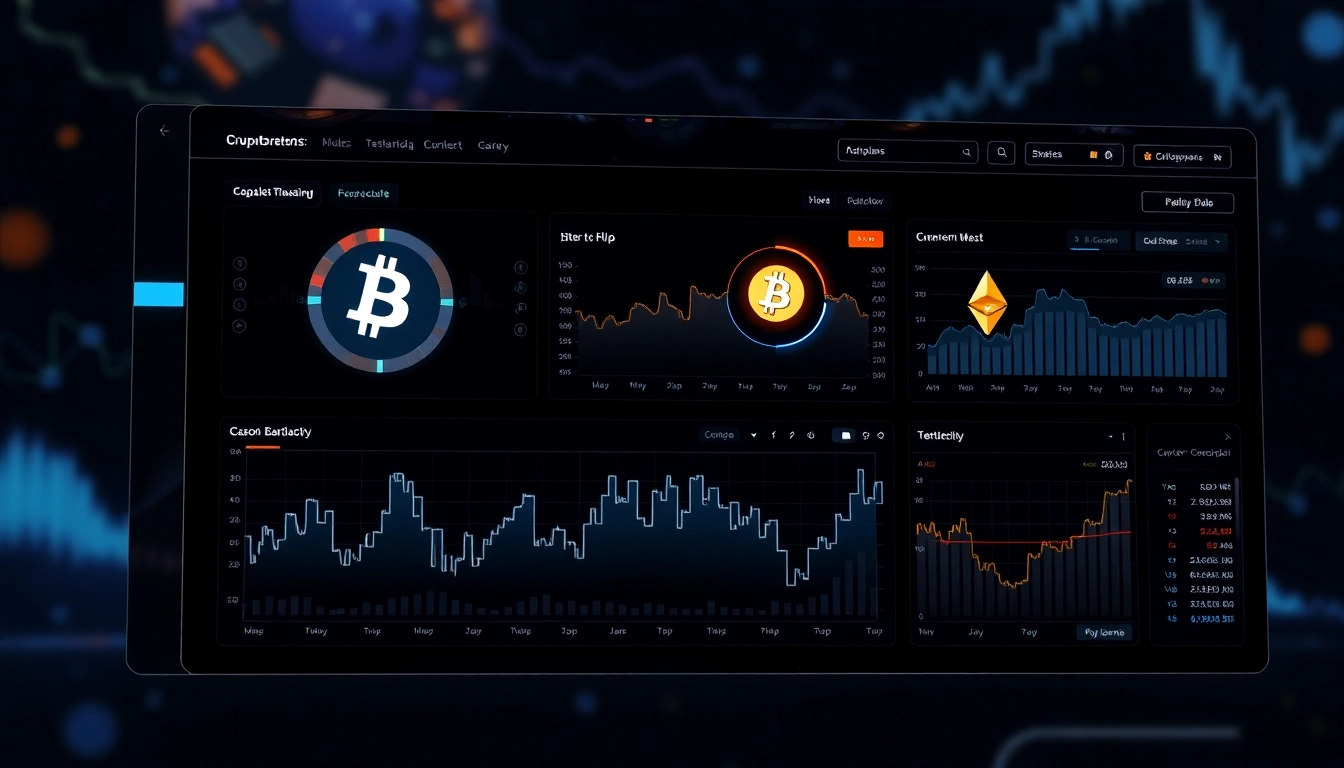The Fundamentals of Staking SOL and How It Works
Staking SOL is increasingly becoming an attractive way for blockchain enthusiasts and investors to generate passive income while supporting the security and decentralization of the Solana network. As one of the leading layer-one blockchains, Solana provides high scalability and low transaction fees, making staking a compelling process for both individual and institutional investors seeking to maximize their crypto assets. To fully understand the potential of staking SOL, it’s essential to explore the mechanics behind Solana’s proof-of-stake consensus, the rewards structure, and how platforms like staking sol simplify this process for users worldwide.
Understanding Solana Staking Mechanics
Solana operates on a proof-of-stake (PoS) model that relies on validators and delegators to maintain network integrity. Unlike traditional proof-of-work blockchains, PoS networks select validators based on the amount of tokens they stake as collateral. Validators are responsible for confirming transactions, participating in consensus, and proposing new blocks.
In Solana, the staking process involves delegating your SOL tokens to a validator node—this can be done directly through compatible wallets such as SolFlare or Ledger Live, or via staking platforms that aggregate and optimize rewards. When you stake SOL, your tokens serve as a security deposit, incentivizing validators to act honestly and efficiently; misbehavior results in slashing, a penalty that reduces staked tokens.
The staking process is straightforward: users deposit SOL into a stake account linked to a validator. These delegations contribute to the validator’s voting weight, influencing its chances of being chosen to produce the next block. In return, delegators earn rewards proportionally based on their stake size, validator performance, and network conditions.
Validators earn rewards from transaction fees and inflation incentives, which are then distributed to their delegators. The overall reward rate, or APY, varies depending on network parameters, validator uptime, and stakes distributed across the network.
Benefits of Staking SOL for Passive Income
Staking SOL offers numerous advantages, making it an attractive passive income strategy. Here are the most compelling benefits:
- Consistent Rewards: By staking SOL, investors receive regular rewards—in the range of approximately 6–10% APY—offering a stable income stream.
- Security and Decentralization: Staking contributes directly to Solana’s decentralization and security, creating a more resilient network.
- Low Entry Barriers: Unlike mining, staking does not require specialized hardware; anyone with SOL can delegate and earn.
- Liquidity and Flexibility: Platforms like Super enable accelerated unlocking and withdrawal processes, allowing you to unstake and access your tokens typically within 6 seconds to 24 hours, far faster than traditional DeFi staking durations.
- Non-Custodial Control: When staking via reputable platforms, your tokens remain in your control, reducing counterparty risk.
Furthermore, staking SOL does not involve expenses like electricity or hardware maintenance associated with proof-of-work systems, making it a cost-effective and eco-friendly way to earn yield.
How Super Simplifies Solana Staking
Super revolutionizes the staking experience by offering an all-in-one, user-friendly platform that handles the complexities behind the scenes. Unlike traditional staking approaches that require manual validator selection, risk assessment, and technical expertise, Super automates these processes, optimizing for highest yields and maximum security.
Through advanced algorithms and real-time data scans of over 17,600+ DeFi pools and protocols, Super identifies the most profitable and secure staking options across multiple blockchains, including Solana. It leverages cross-protocol automation, smart routing, and instant repositioning of assets, ensuring that users always earn the best possible rates with minimal effort.
This platform offers features such as:
- Accelerated token unlocking and withdrawals—access your staked assets within seconds to hours.
- Non-custodial staking—your tokens always remain under your control via connected Web3 wallets.
- Comprehensive security measures including audits by Certik, Cyberscope, and Assure DeFi.
- User-friendly dashboards, educational tools, and mobile compatibility.
Moreover, Super’s support for hundreds of tokens and protocols means you can stake not only SOL but also stablecoins and other assets, all within a single interface. This aggregation simplifies diversification, risk management, and yield optimization for your Solana-related investments.
Choosing the Right Platform for Staking Sol
Security and Transparency in Staking Platforms
Security plays a critical role in staking decisions, particularly given the risks of smart contract vulnerabilities, hacking, and mismanagement. Leading platforms like Super prioritize establishing an impermeable security architecture. All smart contracts are independently audited and undergo routine re-audits; Super’s infrastructure is secured by Fireblocks and certified by top cybersecurity firms.
Transparency is assured through open-source contract deployment, comprehensive activity monitoring, and real-time alerts. As a non-custodial platform, users retain full control over their assets, reducing counterparty risk significantly. Regular external audits and compliance with international standards further bolster trust and reliability.
When selecting a platform, consider features like instant withdrawal capabilities, multi-chain support, and community reviews to ensure your assets are protected and easily accessible.
Comparing Super’s Features with Competitors
Compared to individual wallet staking (e.g., native wallets like Ledger or SolFlare), Super offers automation, yield optimization, cross-protocol diversification, and institutional-grade security. Key advantages include:
- Real-time, automated scanning of thousands of pools to identify the most profitable staking options.
- Multi-chain interoperability supporting over 40 blockchains, including Solana.
- Accelerated asset liquidity, with withdrawals typically available within 6 seconds to 24 hours.
- Non-custodial control, smart contract transparency, and independent security audits.
- Community and institutional solutions with enterprise-grade compliance.
While native wallets may provide direct staking, they often lack the performance optimization, diversification, or advanced automation features available on Super. This makes Super ideal for both retail investors seeking passive income and institutions aiming for scalable DeFi strategies.
Institutional and Retail Solutions for Staking SOL
Super caters effectively to a wide spectrum of users:
- Retail Investors: Easy access with a seamless interface, educational resources, and fast withdrawals, making passive income accessible even to newcomers.
- Institutional Clients: Support for large-scale operations, API integrations for automation, compliance features, and customized liquidity pools enhance scalability and security.
Both categories benefit from Super’s secure, audited infrastructure, preventing fund misappropriation or security breaches. For institutions, features like dynamic interest rates and custom vaults further enhance yield strategies, including Solana staking.
Advanced Strategies to Optimize Your Staking Rewards
Leveraging Restaking and Liquidity Pools
Restaking represents a breakthrough in DeFi yield strategies, allowing users to reuse their staked tokens to generate additional rewards efficiently. Super pioneered this technique, which boosts capital efficiency by leveraging already-staked assets like SOL, ETH, or TON at protocol levels.
Meanwhile, liquidity pools allow you to deposit your assets into decentralized vaults, earning yield from trading fees, incentive tokens, and yield farming rewards. Super’s intelligent routing ensures your assets are continuously directed towards the highest-yield pools across multiple chains, including Solana.
Combining these strategies—restaking plus liquidity pool participation—can significantly amplify passive income, often achieving APYs exceeding 20%, depending on market conditions and asset profiles.
Using DeFi Vaults to Maximize Yields on SOL
DeFi vaults enable automated, diversified investment strategies. For Solana, vaults can be tailored to take advantage of specific platform incentives or yield boosts, while diversifying across validator operators to mitigate slashing risks.
Deep integration with Super’s ecosystem allows users to create bespoke vaults that automatically partition yields, reinvest rewards, and adjust allocations based on real-time data, market trends, or community-driven strategies. These vaults can be configured to include SOL-specific pools, allowing users to capitalise on staking rewards, liquidity provision, and yield farming simultaneously.
Risk Management and Performance Monitoring
Despite its advantages, staking inherently involves risks such as validator misbehavior, slashing, or smart contract vulnerabilities. To mitigate these, Super employs continuous real-time monitoring, multi-layer audits, and risk protocols that automatically alert users of suspicious activity.
Performance tracking dashboards provide transparency regarding staking rewards, APYs, validator reliability, and network health, empowering users to make informed decisions. Additionally, diversified staking across multiple validators and protocols minimizes exposure to single points of failure.
Tools and Calculators to Track Your Staking SOL Rewards
How to Use Staking APY Calculators Effectively
Calculators are essential tools for projecting returns and optimizing APYs. Many platforms, including Super, offer real-time yield calculators that incorporate current APRs, validator performance metrics, fees, and lock-up periods. To use these effectively:
- Input your staking amount and intended duration.
- Review projected rewards based on current APY rates.
- Adjust parameters for different validators or asset allocations to see potential variations.
By analyzing these projections, investors can compare different staking options, diversify their portfolio, and time their withdrawals for maximum benefit.
Analyzing Your Potential Earnings with Real-Time Data
Super’s analytics dashboards provide dynamic data on pool performance, validator uptime, and reward yields. Regularly reviewing these metrics helps users identify superior staking pools, react to network changes, and optimize their reward strategies.
For example, during high network activity, some pools may offer increased yields—adjusting your delegation accordingly can maximize earnings. Similarly, monitoring slashing risks and validator reliability ensures your assets are always assigned to trustworthy operators.
Integrating Analytics for Better Investment Decisions
Advanced users leverage integrated analytics and AI-driven insights to algorithmically manage their staked assets. This involves melding data from multiple sources—network stats, market conditions, validator history—to dynamically rebalance and redelegate assets, yielding enhanced performance.
Platforms like Super support such high-level strategies through API integrations, enabling automated reallocation, yield boosting, and risk adjustment—ensuring you stay ahead in a highly competitive and fast-evolving DeFi landscape.
Future Trends and Innovations in Solana Staking
Emerging Protocols and New Reward Models
The DeFi ecosystem is rapidly evolving, and Solana staking is no exception. Innovations include:
- Tokenized Indexes: Dynamically rebalanced portfolios allow users to diversify systematically, reducing risk and optimizing rewards.
- Adaptive Validator Selection: Machine learning algorithms predicting validator performance optimize stake placements for higher yields and security.
- Enhanced Incentive Structures: Protocols are exploring variable reward models to incentivize long-term staking and participation in governance.
These developments aim to create more resilient and profitable staking ecosystems on Solana and other blockchains.
Decentralized Governance and Community Participation
Active governance models empower community members to influence protocol upgrades, validator selection, and reward policies. As Solana and Super integrate governance functionalities, users can participate in decision-making, aligning incentives and fostering transparency.
This participatory approach encourages ecosystem growth, enhances security, and ensures that staking strategies evolve to meet user and network needs.
Super’s Roadmap and Commitment to Innovation
Super’s vision for 2025 includes expanding supported assets, refining algorithmic DeFi indexes, launching a Super Launchpad for new protocols, and introducing synthetic asset vaults. Their focus on security, scalability, and user experience aims to cement their position as a leading DeFi infrastructure provider.
With continuous upgrades, AI-driven yield optimization, and a focus on interoperability—such as cross-chain staking and liquidity pools—Super ensures that users can stay ahead of the curve in the rapidly transforming Web3 landscape.




